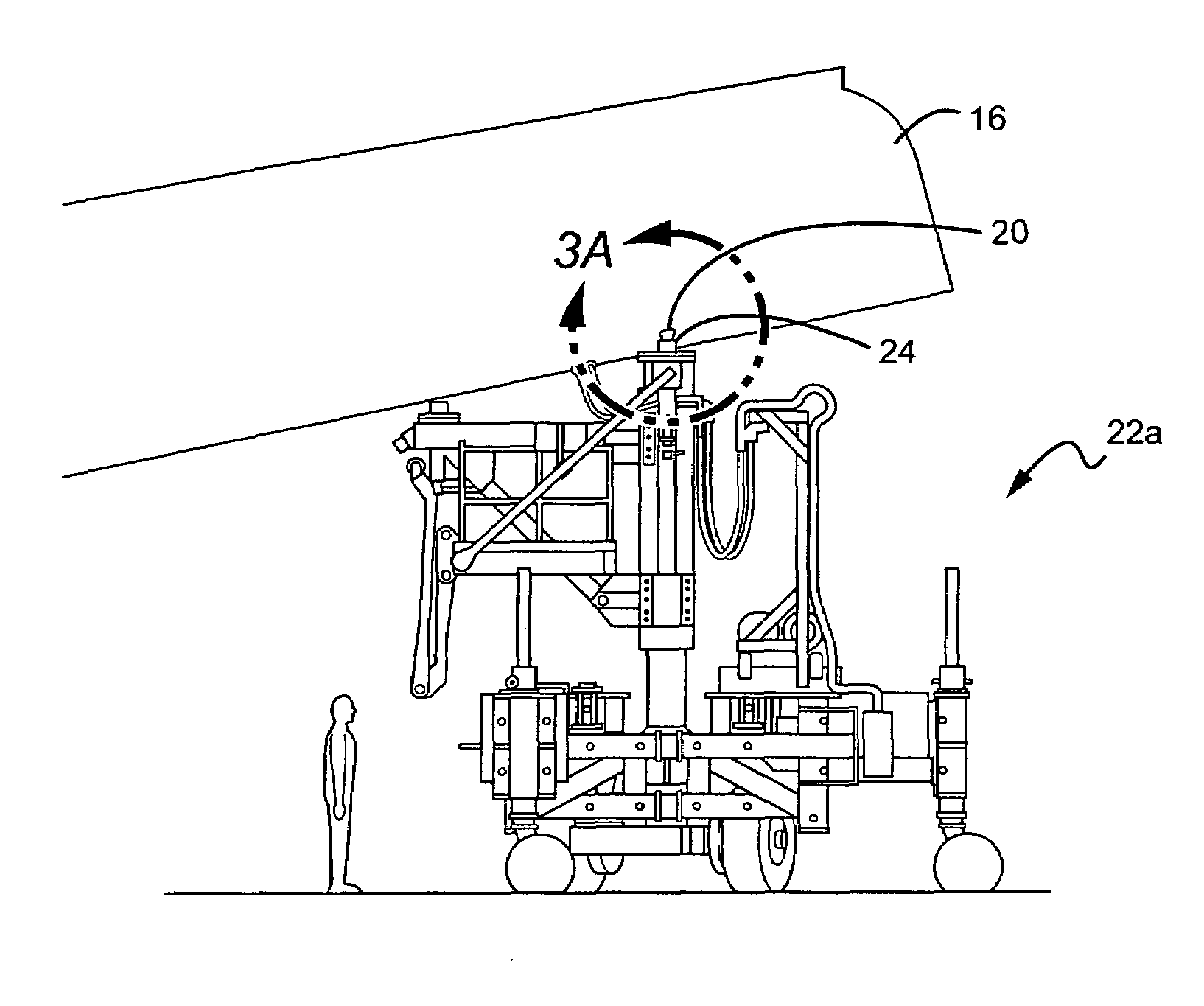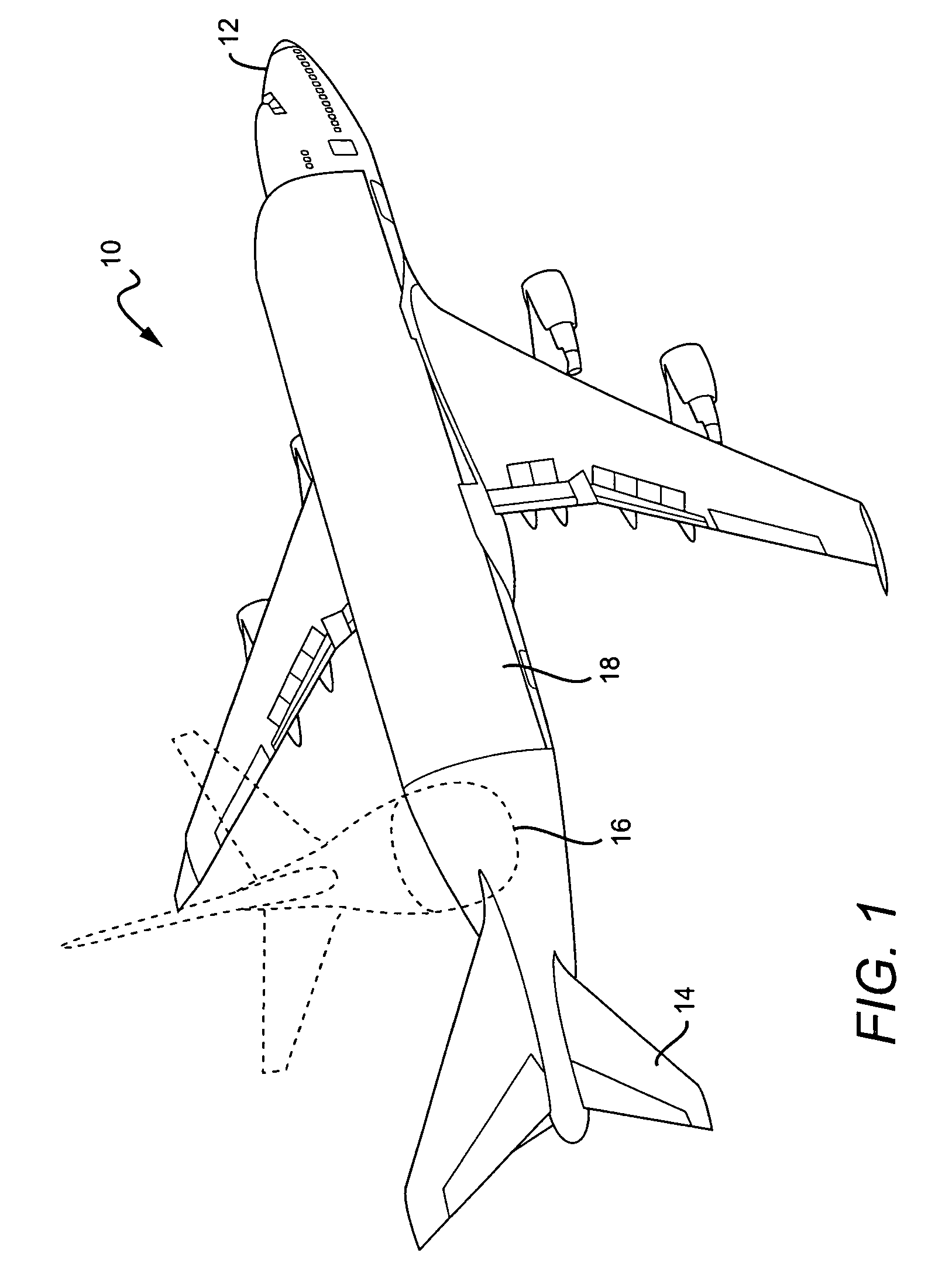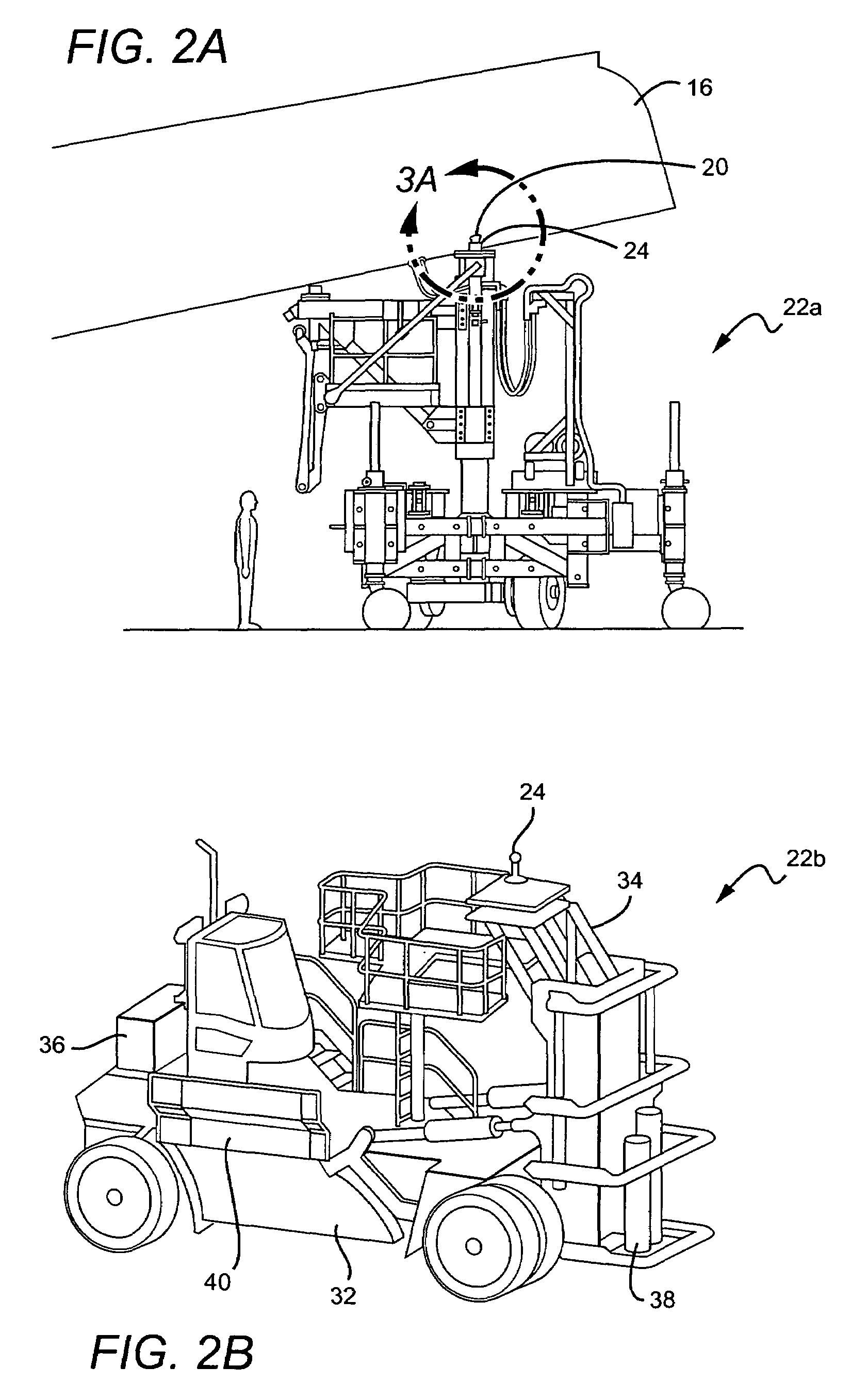Actuation system for tail section of aircraft
a technology for aircraft and tail sections, applied in the direction of fuselages, weapons, transportation and packaging, etc., can solve the problems of large load required to open or close the tail section, difficulty in adjusting the angle so as to reduce the cost of transport, minimize the turn time of the tail section, and optimize the effect of the aircraft structur
- Summary
- Abstract
- Description
- Claims
- Application Information
AI Technical Summary
Benefits of technology
Problems solved by technology
Method used
Image
Examples
Embodiment Construction
[0031]The invention now will be described more fully hereinafter with reference to the accompanying drawings, in which some, but not all embodiments of the invention are shown. Indeed, this invention may be embodied in several different forms and should not be construed as limited to the embodiments set forth herein. Rather, these embodiments are provided so that this disclosure will be thorough and complete and will fully convey the scope of the invention to those skilled in the art. Like numbers refer to like elements throughout.
[0032]Referring now to the drawings, FIG. 1 shows a perspective view illustrating a cargo transport aircraft 10 having a nose 12 and a tail 14. A vertically hinged tail section 16 of an aircraft and a fuselage portion 18 are shown in phantom lines in an open position. The tail section allows access to the aircraft for loading and unloading of cargo. As shown in FIG. 2A, the tail section incorporates an actuation system comprising at least one interlock com...
PUM
 Login to View More
Login to View More Abstract
Description
Claims
Application Information
 Login to View More
Login to View More - R&D
- Intellectual Property
- Life Sciences
- Materials
- Tech Scout
- Unparalleled Data Quality
- Higher Quality Content
- 60% Fewer Hallucinations
Browse by: Latest US Patents, China's latest patents, Technical Efficacy Thesaurus, Application Domain, Technology Topic, Popular Technical Reports.
© 2025 PatSnap. All rights reserved.Legal|Privacy policy|Modern Slavery Act Transparency Statement|Sitemap|About US| Contact US: help@patsnap.com



